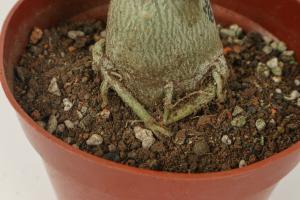How to Properly Cut a Snake Plant
Snake plants, also known as Sansevierias, are popular indoor plants well-loved for their unique appearance and low-maintenance nature. However, like all plants, they may require pruning from time to time to keep them healthy and looking their best. In this article, we will guide you on how to properly cut a snake plant without harming it.
Preparing for Pruning
Before cutting your snake plant, it is important to prepare the necessary tools and materials. First, ensure that your cutting tool, whether it be a pair of scissors or pruning shears, is clean and sharp. Dirty or dull tools can leave jagged or uneven cuts that may damage the plant. Additionally, prepare a clean space or tray to hold your cuttings and a pot with fresh soil where you can replant any removed sections.
Identifying Areas for Cutting
When identifying areas for cutting, consider trimming yellow or brown leaves or those that are damaged or overgrown. Additionally, you may opt to cut back the central stem or divide the plant into smaller sections to promote new growth. However, avoid cutting healthy green leaves or stems as this may discourage growth or cause injury to the plant.
Making the Cut
When cutting your snake plant, be sure to do so at a 45-degree angle, leaving a small portion of the leaf or stem intact. Avoid cutting too close to the base of the plant, as this can result in damage or disease. After making your cut, use a clean cloth to wipe away any excess moisture or sap. If you are dividing the plant, gently separate the sections with your hands or a clean knife.
Replanting and Care
After pruning your snake plant, be sure to replant any removed sections in fresh soil, ensuring that they are at the same depth as before. Water the newly transplanted sections sparingly, allowing the soil to dry slightly in between waterings. Moving forward, take care not to overwater your plant as this can lead to root rot. Place your snake plant in a well-lit area, but avoid direct sunlight or extreme temperatures. They prefer indirect, filtered light and moderate temperatures.
Conclusion
Properly cutting a snake plant is a simple process that can promote healthy growth and improve its overall appearance. With just a few simple steps, you can easily prune your snake plant with little to no damage or harm. Remember to use clean, sharp tools, make clean cuts at a 45-degree angle, and replant any removed sections in fresh soil. With proper care and pruning, your snake plant will continue to thrive and bring joy to your home for years to come.

 how many times do yo...
how many times do yo... how many planted tre...
how many planted tre... how many pine trees ...
how many pine trees ... how many pecan trees...
how many pecan trees... how many plants comp...
how many plants comp... how many plants can ...
how many plants can ... how many plants and ...
how many plants and ... how many pepper plan...
how many pepper plan...































